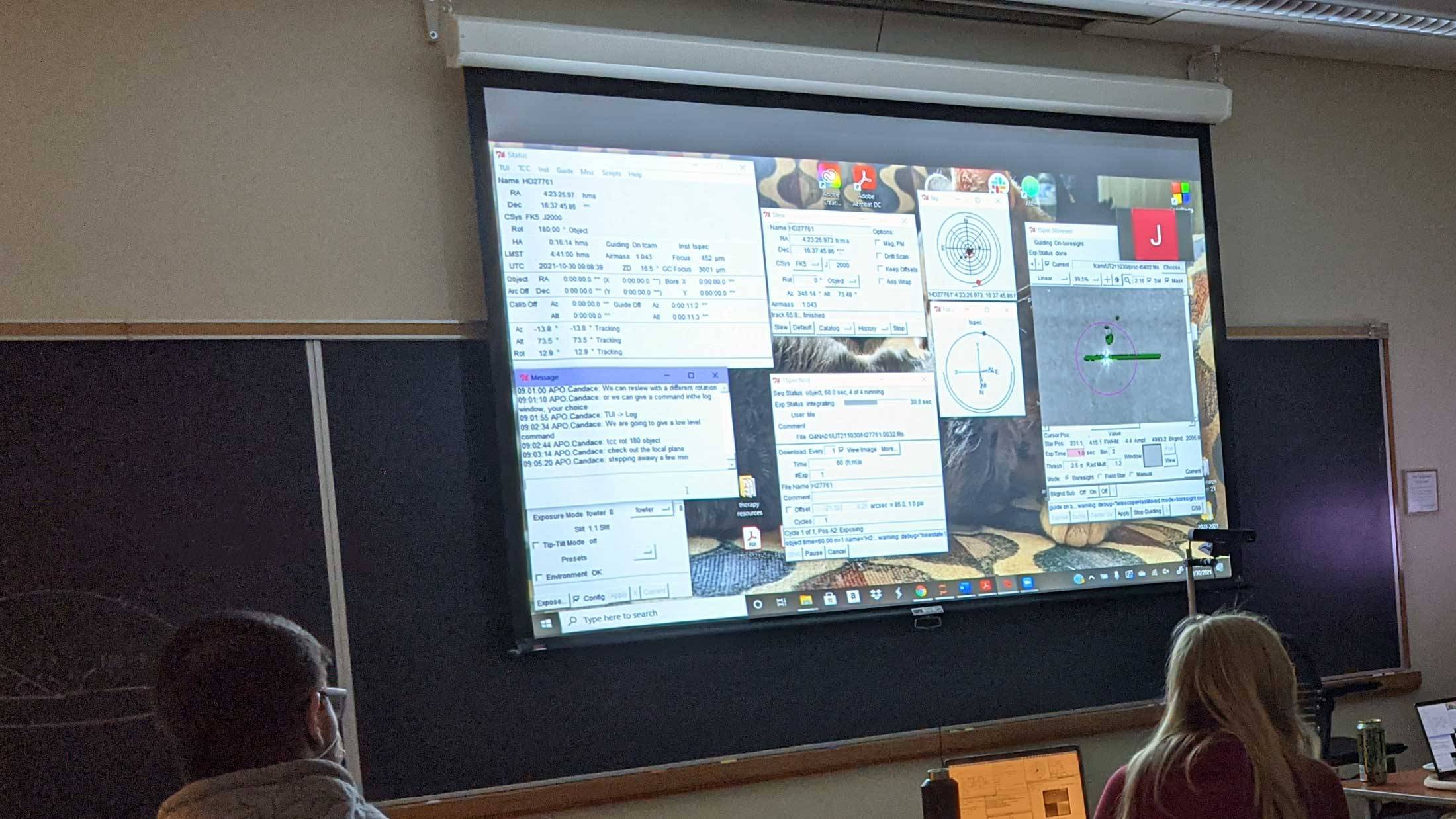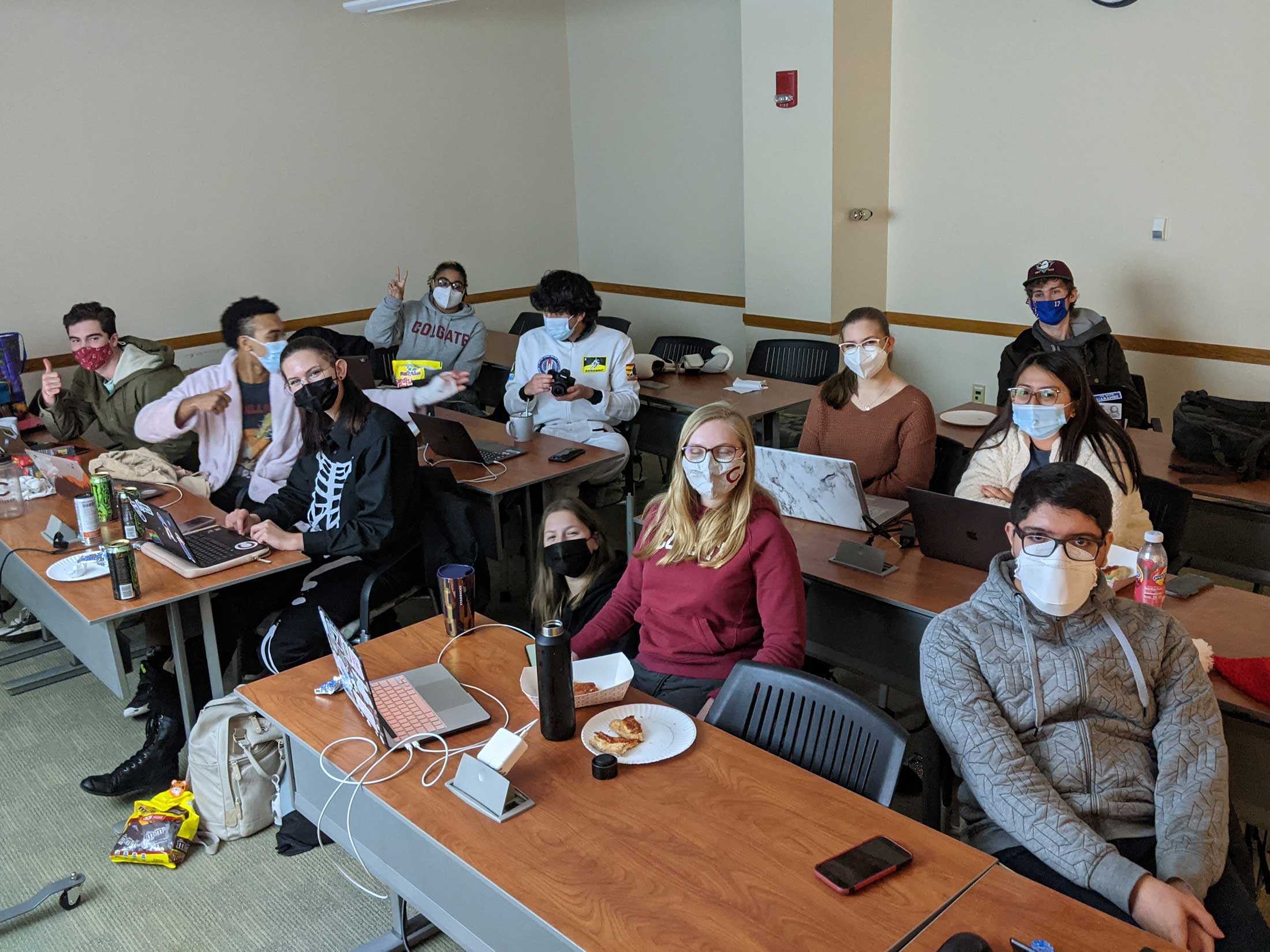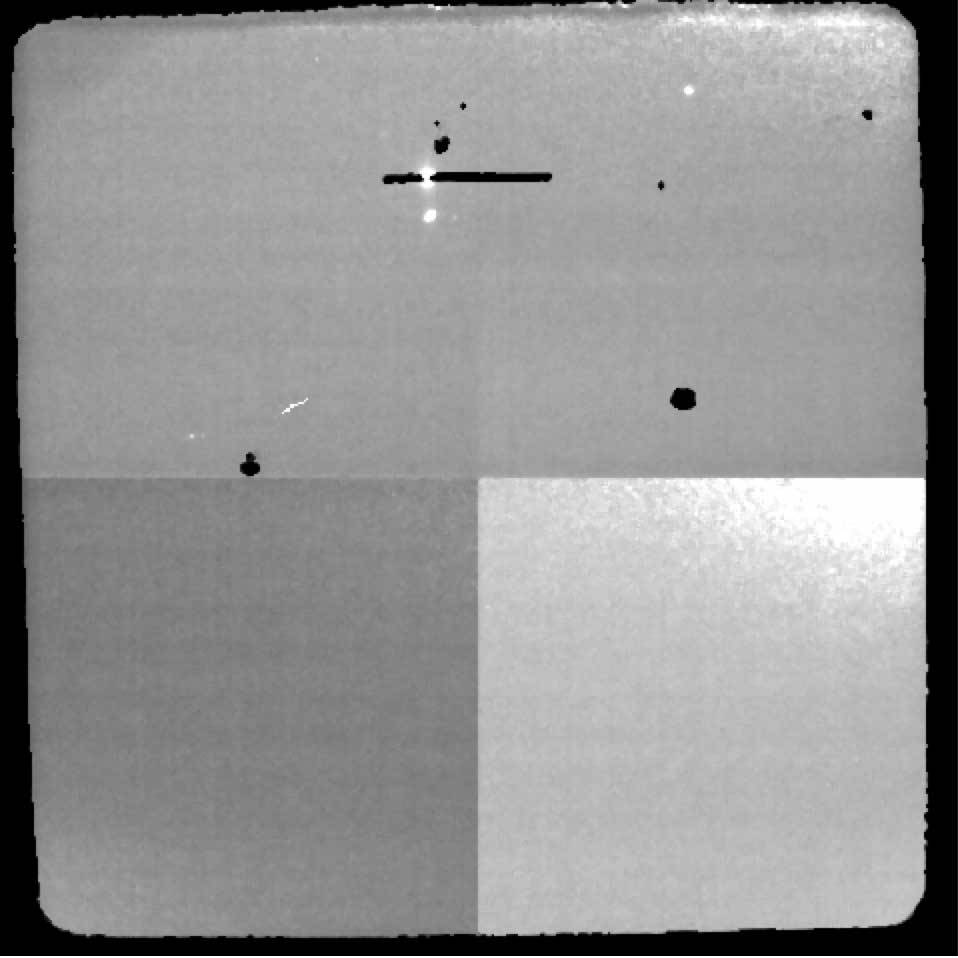Spending two nights in a row obtaining near-infrared spectra of young stars may constitute the most unconventional, yet most fulfilling, Halloween weekend activity in the history of Colgate University. The monumental task was a part of our astronomical techniques class — a required course for all physics-astronomy students — which teaches us how to use telescopes to acquire and obtain relevant results from astronomical data.
For this purpose, we relied on a pair of half-nights at Apache Point Observatory in New Mexico, Oct. 30–31. The site is funded and managed by the Astrophysical Research Consortium and houses three main telescopes. We needed to use the largest of them all: a 3.5 meter reflecting telescope, equipped with TripleSpec, a medium-resolution near-infrared spectrograph. This type of availability is seldom enjoyed by undergraduate students and is mainly reserved for graduate students and professional researchers. Normally, our observations would have been performed on-site, but given the current COVID conditions, we operated the telescope remotely.
Before we got on the telescope, we underwent two training sessions with Candace Gray, on-site support astronomer and observing specialist at Apache Point. During those sessions, we learned how to use TUI, the remote operation gui for the 3.5 meter telescope. We discussed the basic details of spectroscopy with our professor, Jeff Bary. And we split our ranks into four groups of three people, so everyone would have a chance to rest.
The last tasks remaining before the long nights were to decide on a series of targets and to assemble an observing plan. Observations need to be carefully timed in advance in order to maximize telescope utilization efficiency while ensuring that we observe targets at an appropriate altitude in the sky. The lower they are in the horizon, the more the acquired data will be degraded by turbulence in earth’s atmosphere.
With the precious telescope time we had, we decided that the best use would be to obtain near-infrared spectra of young stars that are still in the process of accreting material from dense disks of spinning gas that surround them; we call this an accretion disk. Understanding stellar evolution and formation has been one of the most important fields in astronomy, for it holds the key to explaining matters as profound as how our sun evolved in the past, how our earth was born from a primordial spinning cloud of gas, and how this unlikely pair of spinning partners will continue to evolve in the future.
Equipped with the necessary supplies — six pizzas, several bags of candy, and an unhealthy amount of caffeinated liquids — we settled down and connected to the telescope using TUI. With the help of Candace, we focused the telescope and began taking spectra of our targets.
At first, it seemed strange that what we were doing was actually moving a real telescope. The correlation between pressing buttons and seeing indicators and graphs move was hard to connect to a real apparatus, but as we began taking images and seeing what the telescope had captured, it became real.
This took from 3:30 a.m. to 9:00 a.m., the time at which the sun began rising in New Mexico. Then, we captured images to properly calibrate our spectra. An hour and a half later, we emerged from Ho Science Center, and as other students made their way to the Coop to have breakfast and begin their day, we headed straight to bed for some much needed rest before the coming night.
The second night of observing went by more smoothly. Having learned from our previous mistakes the night before, we were off to a great start, and before we knew it, it was time to take calibration frames again, and soon we were getting some well-deserved rest.
In total, we obtained spectra of 15 young stars and brown dwarfs in the Taurus-Auriga star forming region. What follows is the tedious task of processing and analyzing the data. We will look for traces of accretion in these systems, and in theory, we should be able to find mass accretion rates, not only finding out how fast these stars are growing, but also registering their surface temperature, composition, and evolutionary stage.
This experience has brought us closer as a class, something important for physics students in a small, close-knit department. It also has provided us with valuable, practical experience. Those nights we spent in Ho, working together to capture starlight and unmask the mysteries of the stars, will remain in our memory as one of our first real experiences performing scientific research, and the skills we gained will help us throughout our entire careers.


